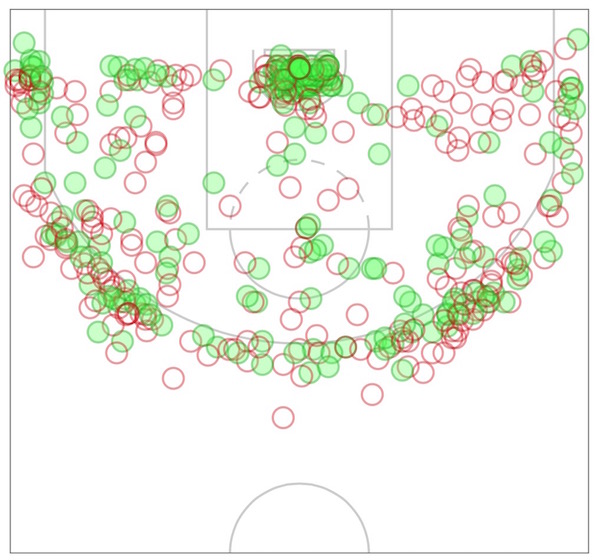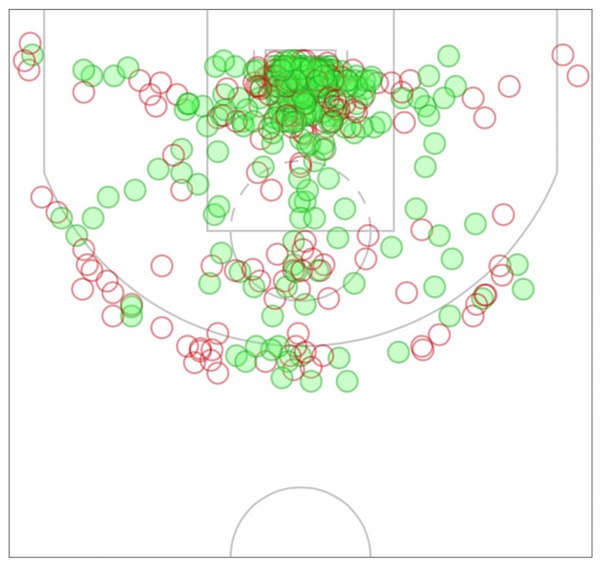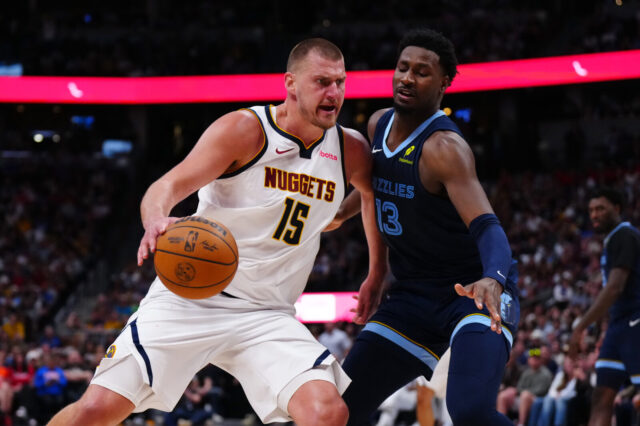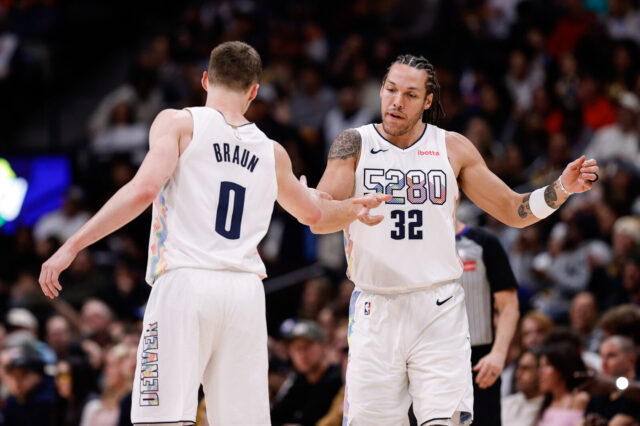The Denver Nuggets made the big free agent move they’d been waiting for, signing Paul Millsap to a three-year, $90-million contract over the weekend. The move should immediately put Denver back in the playoff picture. It also means the current franchise cornerstone, Nikola Jokic, will have to do a little movement of his own.
Denver landed a solid two-way forward in Millsap, but head coach Michael Malone will have some finagling to do on the offensive end as a result.
In terms of raw numbers, Millsap should be an upgrade across the board from the departing Danilo Gallinari, who is reportedly headed to the Clippers in a sign-and-trade deal.
Per 36 minutes, Millsap averaged 19.1 points, while Gallinari averaged 19.3 (second on the team to Jokic’s 21.6). That’s a virtual one-to-one tradeoff.
On the boards and as a facilitator, Millsap will be an upgrade. The incoming Nugget averaged 8.2 rebounds and 3.9 assists per 36. The outbound Nugget contributed 5.5 and 2.3 in each of those categories.
Where Millsap will make the biggest difference in replacing Gallinari is on the defensive side. Millsap earned a 3.8 defensive win share rating last season, while Gallinari was a 0.7. Only three Nuggets players last season rated higher than a 1.0, with Jokic topping the list at 2.0).
Millsap’s DWS was down from a career high of 6.0 two years ago, but still above his career average of 3.48. Gallinari’s highest career DWS, meanwhile, was a 2.0 in 2012-13. He’s averaged 1.06 for his career.
But for all the good Millsap is going to do on the defensive end, there’s a chance he could gum up the works a bit on the offensive side.
Where Gallinari made his living on the perimeter, Millsap’s money is made in and around the basket.
Take a look at Gallinari’s shot chart from 2016-17, courtesy of Vorped.

While Gallinari certainly has a strong finishing presence on the interior, he’s a heavy 3-point shooter who leaves plenty of room open inside the arc.
Compare Gallinari to Millsap, who spaces the offensive half more effectively overall, but does most of his best work inside the key.
That could become problematic, as the shot chart for Jokic reveals a very similar pattern to Millsap’s.  As Denver learned last year with their failed “Twin Towers” experiment of Jokic and Jusuf Nurkic, there’s only so much room underneath the basket.
As Denver learned last year with their failed “Twin Towers” experiment of Jokic and Jusuf Nurkic, there’s only so much room underneath the basket.
Jokic is a far more efficient than Millsap, shooting 62.6 percent from the field last year compared to 45.8 percent for the new Nugget.
That puts Malone in a bit of a tricky spot if he hopes to get both on the floor at the same time. Given the long-term future Denver sees in Jokic and the money they spent on Millsap, Malone’s going to have to find a way.
The natural thought would be to have Jokic play more outside the key, but that was one of the big problems with the Jokic-Nurkic pairing last season.
Not only does it move Jokic away from the basket, where he is incredibly efficient, it also changes his passing angles.
Jokic can pass from both inside and out, as this passing highlights video deftly illustrates.
However, most of his best passes from the perimeter go to guards cutting into a wide-open lane. That means Millsap is going to have to show patience on the outside to allow Jokic to work his magic.
Millsap isn’t entirely incapable of playing more of a perimeter role, as this 2016-17 highlights montage shows.
But the video also makes clear that Millsap is at his best playing a game that’s very similar to Jokic’s.
Jokic grew by leaps and bounds in his sophomore season. His basketball IQ is off the charts, so there’s no reason to think he can’t adjust and become a more lethal player away from the hoop. That may make it very tempting for Malone and the Nuggets to ask Jokic to move more to the perimeter, but it also risks taking away Denver’s biggest strength – Jokic in the middle.
Both Millsap and Jokic are smart, unselfish players. There has to be a solution that gives both the ability to shine, but each will have to concede some space under the hoop compared to what they’re used to.



